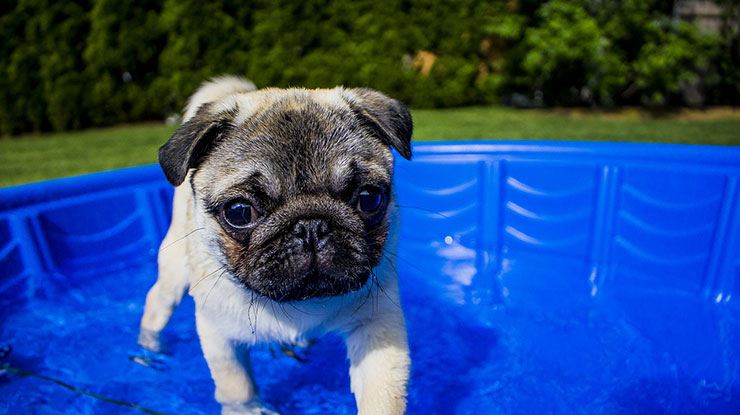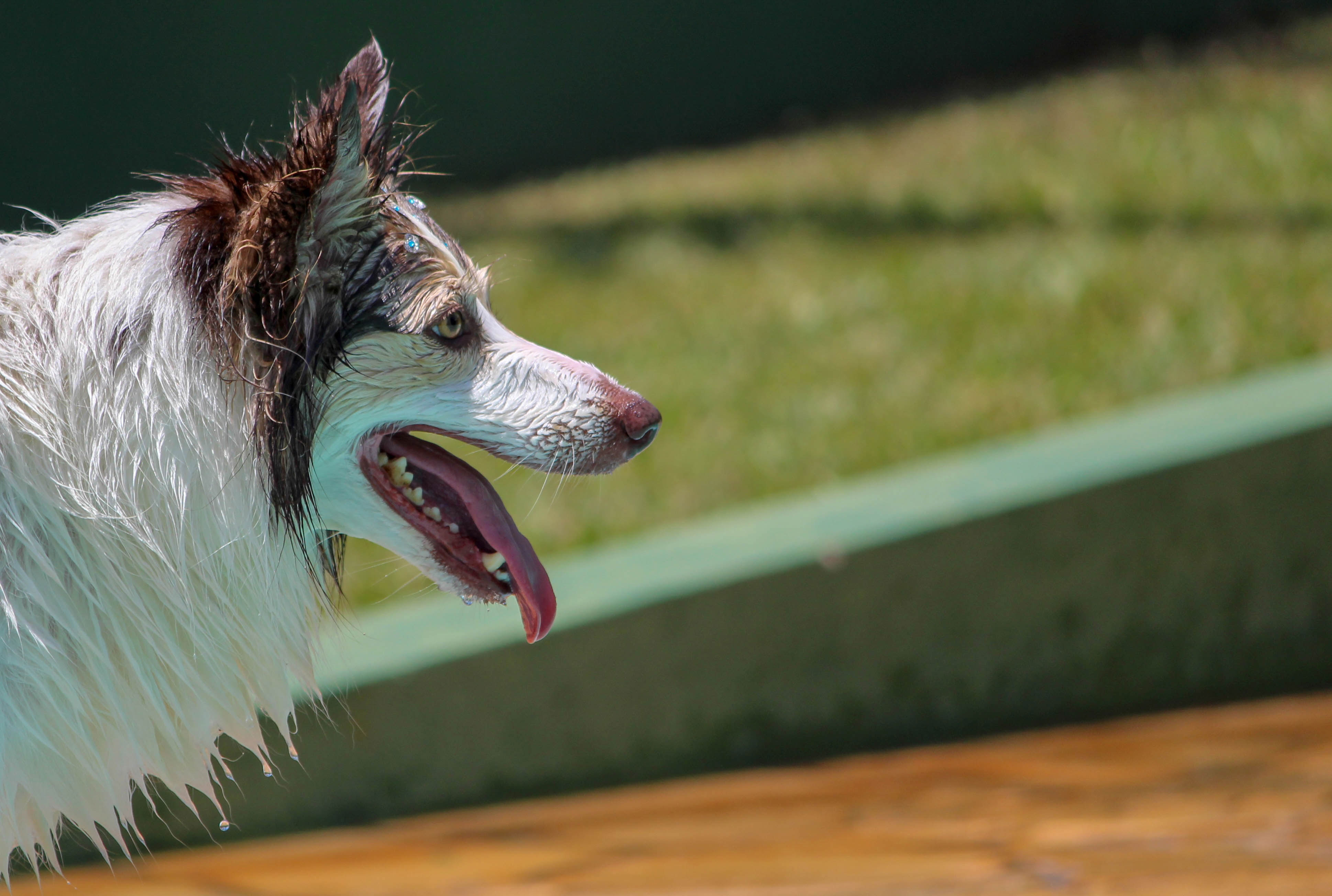
How Pools Can Be Used to Rehabilitate Injured Dogs
For centuries, people have recognized the benefits of water to ease pain and accelerate healing. Hot springs were visited for health reasons, and whole resort-type atmospheres were built to accommodate the users. One of the oldest and most well-known is the city of Bath in England. There are many similar sites in the U.S. as well. Hot Springs, Arkansas, has a number of restored elaborate bathhouses, which were popular around the beginning of the 1900s. 
Aquatherapy for Dogs
The history of water therapy––known as aquatherapy or hydrotherapy––for dogs is much more recent. While owners may have taken their dogs to the lake or pool for recreational reasons, it is only in more recent years that hydrotherapy has been utilized to help with recovery from injury or surgery and for pain relief as well as fitness.
More and more vets are recommending hydrotherapy as part of a dog’s treatment. If this type of treatment is recommended for your dog, your vet will prescribe a specific therapy type and focus on the muscle groups that need attention. The vet will also specify which actions and activities your dog should avoid and for how long. For instance, some dogs will not be allowed to walk stairs for several weeks after surgery.
There are several advantages of water therapy. For example, the water is heated to make it soothing for sore and healing muscles and joints. The resistance of the water also makes the exercise much more effective in less time. The muscles will be strengthened, and the cardiovascular effect will be greater. The buoyancy of the water makes it less stressful on the dog’s joints as well as sore muscles.
Types of Water Therapy
There are two basic types of therapy: walking on a treadmill that is submerged in the water or directed play therapy in a pool. Hydrotherapy should always be done one to one between the therapist and the dog. There should be lots of treats and fun involved so your dog looks forward to his therapy sessions.
If your dog can’t swim, you will need to provide your dog with a life vest, which can be found for dogs of all sizes. There are also vests that have a handle on the top of the dog’s back, kind of like a suitcase. Some are a combination with the life vest flotation and others are not.
These handles are helpful to give additional support to your dog in the water while he is regaining his strength. They also are helpful for getting your dog in and out of the pool, especially if he is not allowed to climb steps yet. Just remember that not all of these function as floatation devices.
If treadmill therapy is recommended, your dog will be placed in a contained tub equipped with a treadmill, and warm water will be added to match the optimal depth for your dog’s height. The speed of the treadmill can be adjusted from very slow to a trot, depending on the dog’s ability. The treadmill is especially helpful for a dog who has had back surgery or a dog who has had a leg amputated and now needs to learn how to walk on three legs.
If your dog is having hydrotherapy in a pool, the therapist will be working with your dog to use its entire body and all four legs in the water. While it may look like play, they will be directed movements that encourage the dog to use the affected areas. The directed “play time” may be alternated with massage and/or a stretching of the target muscles.
Currently, there are not a lot of dog therapy facilities outside of larger metropolitan areas. However, that doesn’t mean your dog can’t have the benefit of hydrotherapy. If you have a backyard pool, you and your dog could enjoy the benefit of water therapy at home. Always check with your vet first for any restrictions.
The same rules apply if you are giving therapy in your backyard pool. Purchase a safety vest if your dog is not a swimmer or is weak from his injury or surgery. If your dog is not allowed to use the stairs or you only have a ladder for access into and out of the pool, you may want to purchase the vest with the handle mentioned earlier. Another alternative is a pet ramp that can be installed in your pool to allow the dog to walk in or out easily. Have lots of doggie toys as well as treats to encourage your dog to play in the water. Have some toys that float and some that will sink for your dog to retrieve.
Using Your Pool with Your Dog
If your main goal is just to have your dog walk against the resistance of the water, you can use your pool if you have a shallow end to your pool. If your backyard pool design includes a seating shelf, that could be another alternative area for him to walk on. If you have a small dog and either of these areas will be too deep for him, consider purchasing a large kiddie pool for your dog to walk in. Add some of those stickers you put in the bottom of your bathtub or shower to prevent slipping to give your dog secure footing.
If your dog has arthritis or is overweight or out of shape, swimming will be perfect for him. Your dog will have fun in the backyard pool with you, and it will be easy on his joints while strengthening his muscles. Remember that playing in the water will give your dog all the benefits of a long walk on dry land in less than half the time.

Chris Hoffman is the founder of Backyard & Pool Superstore currently based outside of Dallas, TX. Backyard & Pool Superstore is an e-commerce leader in backyard, pool, spa, grill & patio products. Before starting Backyard & Pool Superstore, Chris has had 10 years of retail, construction, manufacturing, and distribution experience in the swimming pool & spa industry.
When Chris isn’t working, he moonlights as baseball coach, dance recital standing ovation specialist, husband, and German shepherd enthusiast.










